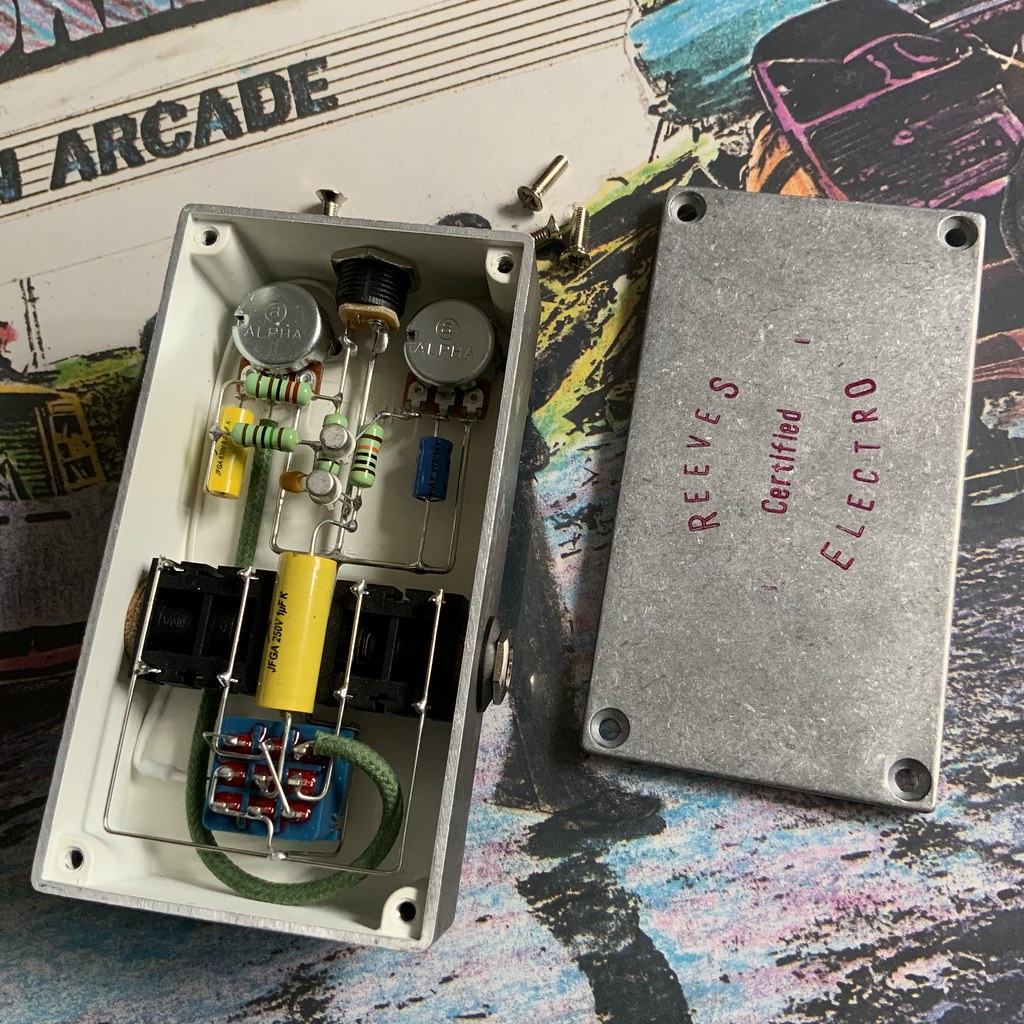Only if you don’t know what you are looking at! Point to point wiring is the cleanest and most direct way to build a circuit and Croft manages quite large assemblies without even a tag-board. Think about it, which is the most direct/shortest signal path: soldering the resistors and capacitors to a PCB, or directly to one another? It may not look pretty or blingy, but it is a very logical way to work. It tends to be a very repairable approach too.
PS Not hi-fi, in fact the exact opposite, but here’s some point to point done to truly obsessive levels of perfection:
It being beautiful doesn’t necessarily make it sound any better, but it really is fuzz pedal as art form (it’s my Reeves Electro 2N2Face).



